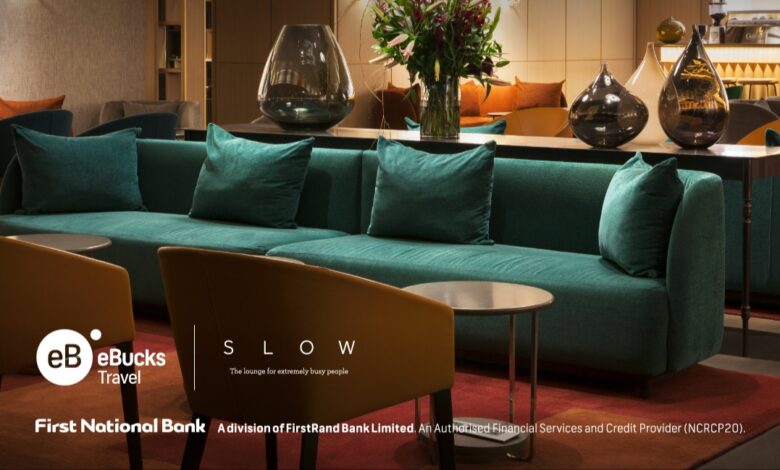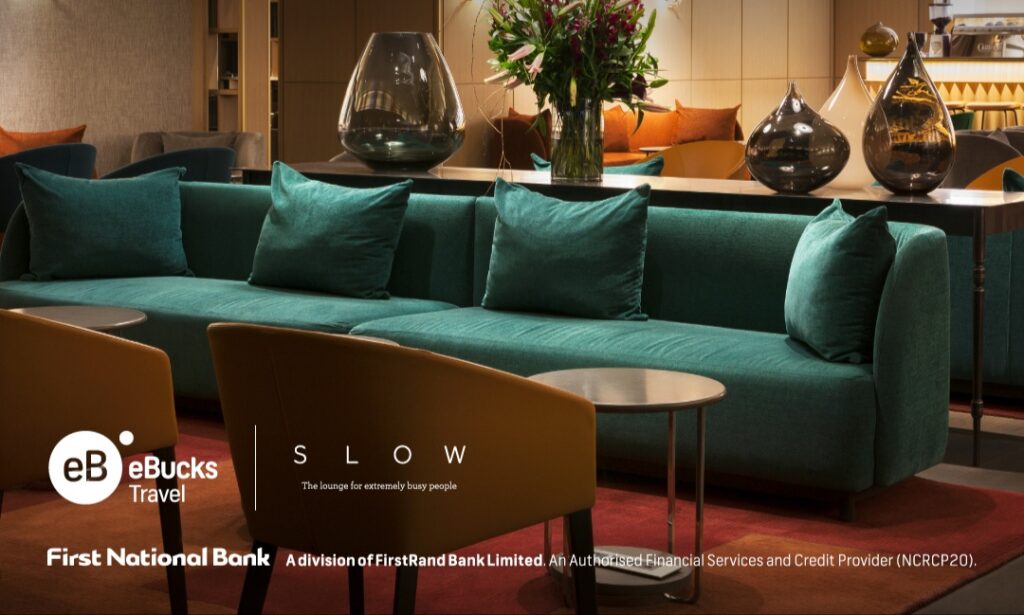FNB Announces Unlimited Complimentary Access At The SLOW Lounges For All Its Clients

FNB Announces Unlimited Complimentary Access At The SLOW Lounges For Its Clients. First National Bank has announced that its clients will have access to SLOW lounges as part of its complimentary service from the 15th of September 2021 to 15 November 2021.

This will be available to FNB customers who will be travelling. The unlimited complimentary visits to SLOW lounges is available for customers who hold FNB’s Premier, Private Clients, Private Wealth and RMB Private Bank Fusion, debit and/or credit cards. Including Business clients who hold FNB’s Platinum Business, Enterprise Business, Healthcare & Private Business and RMB Private Bank Business debit and/or credit cards. SLOW has reimagined the travel experience through its inviting, award-winning interiors, celebrated local art collection, considered catering menu and distinguished service delivery.
People will be able to relax, grab some drinks, be productive, or just get away from it all. Airport lounges can provide clients with a peace of mind on their journey. Regardless of whether they’re are traveling for business or leisure, lounge access can help them make the most of their airport experience. When one is experiencing a flight delay, cancellation or misconnect. Lounges are quiet spaces where one can relax and escape the stress of the terminal. Complimentary amenities can include premium alcohol and food, fast WiFi, showers, business centres and much more. Clients can reserve a quiet space to get work done, charge their devices, and make use of the fast WiFi.
This will incentivise more people to travel as they would be enjoying all the things that the SLOW lounges have to offer. Many people were sceptical about traveling for leisure because of the Covid 19 pandemic and the lockdown restrictions, now that President Ramaphosa has put the country on adjusted level 2 lockdown, more and more people will be travelling to different parts of the country and the world. Therefore they will be utilising this service if they meet the selection criteria.
There are no time restrictions at SLOW International in the O.R. Tambo International Airport, International Terminal. The lounge is open between 10:00–00:00 and qualifying guests can visit the lounge any time before a flight.


